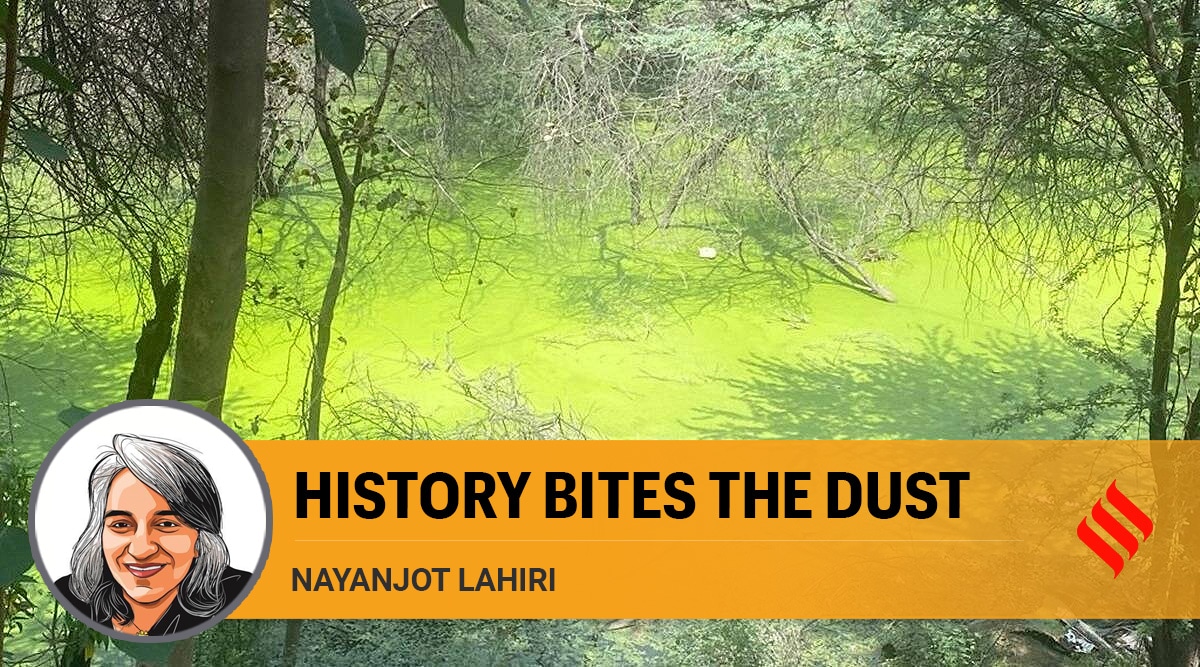 Nayanjot Lahiri writes: The ASI budget for exploration and excavations is less than 1 per cent even though it informed the Public Accounts Committee of its intention to raise the allocation to 5 per cent of the total budget. (File)
Nayanjot Lahiri writes: The ASI budget for exploration and excavations is less than 1 per cent even though it informed the Public Accounts Committee of its intention to raise the allocation to 5 per cent of the total budget. (File)The news from the Archaeological Survey of India (ASI) about Anang Tal in Mehrauli did not make big headlines. It was simply reported that on August 22, the Centre issued a notification to take steps to protect this site, after which Anang Tal would be declared a monument of national importance.
In response to this, a former Chairman of the National Monuments Authority (NMA) compared “the national monument stature for Anang Tal” with the “re-coronation of Anang Pal Singh Tomar in Delhi”. If he had used this occasion to indulge in some sober reflection, the NMA chairman would have noted that the reservoir has been reduced to a pitiable state. The CAG’s performance audit on Preservation and Conservation of Monuments and Antiquities that was tabled in Parliament a few weeks before the above-mentioned notification singled out Anang Tal as being “in the last stage of disappearance”. Apart from recording its decrepit state with the aid of photographs, the auditing team’s visit revealed that sewage from nearby areas “was being discharged into the reservoir”.
The CAG reports on the state of India’s heritage — ranging from those relating to museums in 2011 to its findings on the ASI in 2013 — are the most comprehensive public documents on the institutional malaise that dogs the conservation of our monuments and antiquities. Such documents are essential because after 2007, there has been no internal audit of the ASI conducted by the ministry. These excellent reports and those of Parliamentary Committees are what we have for understanding the state of Indian archaeology, monuments and museums. For this reason, some of the key observations of the 2022 report are worth highlighting.
The CAG report categorically notes that there is no national policy on archaeological exploration and excavation. The same is possibly true for antiquities. The ASI has estimated some 58 lakh plus antiquities all over India, but there is no database or inventory in its possession. The ASI budget for exploration and excavations is less than 1 per cent even though it informed the Public Accounts Committee (PAC) of its intention to raise the allocation to 5 per cent of the total budget. The failure to do so could well be because of the reduction in the ASI budget. Despite all the public talk of the importance of conserving our national heritage, the budget of the ASI, the primary institutional guardian of monuments, in 2021-2022 has been reduced by more than Rs 200 crore. For an organisation whose total budget is Rs 1,246.75 crore, this is a major reduction.
There is no synergy between the different agencies involved in heritage conservation. The National Culture Fund, established in November 1996, to rope in individuals and corporate groups to fund conservation, has utilised only 14 per cent of its funds because of the lack of coordination with the ASI. The National Monuments Authority, a statutory body for implementing heritage by-laws and site plans for each monument, has only finalised and notified 31 monuments, while those relating to the 210 more are in different stages of finalisation. This is a fraction of the 3,693 monuments on the list of Centrally Protected Monuments. One wonders if this snail’s pace is a consequence of a sense that the Centre is proactively seeking to amend the act — drastically reducing the prohibited and regulatory area around monuments. By minimising the security net around monuments — a move that would endanger them — the government could make the exercise of creating heritage by-laws in their present form redundant.
The report reveals that the ASI, in many cases, has been working in violation of the provisions of the Monuments (AMASR) Act. At Humayun’s tomb, a CAG inspection revealed commercial construction being undertaken in the prohibited area by an “agency other than the ASI”. The NMA specifically communicated to the auditors that they had not received any application for the development of a museum and shopping complex within the prohibited area of the Humayun’s Tomb complex.
Finally, the poor state of conservation at ASI-protected sites and the lack of follow-up are worth pointing out. The Buddhist stupa site of Kanaganahalli in Karnataka highlights this. In its 2013 audit, the CAG talked of glaring shortcomings in conservation and protection. The joint inspection carried out during the present audit also revealed that precious carved panels were still lying scattered in the open. The cement beds created at the open shed for placing artefacts had cracked. The site itself, spread over some 23 acres, was covered with thick vegetation and grass — it is a fire hazard when dry. The CCTV camera installed at the site was not functioning while the lighting was inadequate.
Reading the report’s observations on this sad saga of monument conservation, I was left with the ironic thought that the modern keepers of ancient material can be as culpable for making Indian history bite the dust as the Muslim invaders whom the ruling establishment and its fellow travellers more routinely blame.
(Lahiri is Professor of History, Ashoka University and author of Monuments Matter — India’s Archaeological Heritage Since Independence)